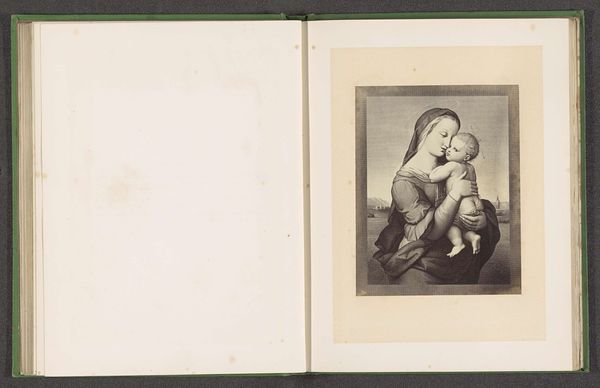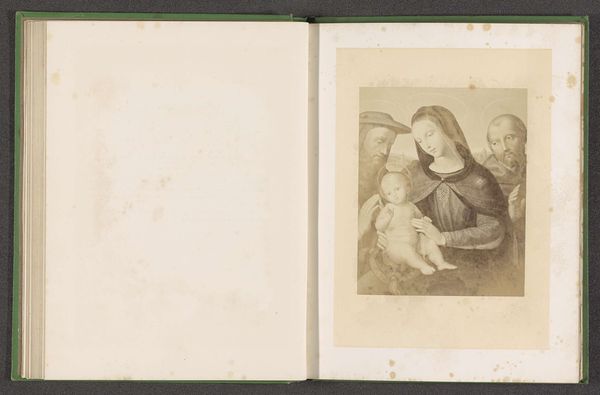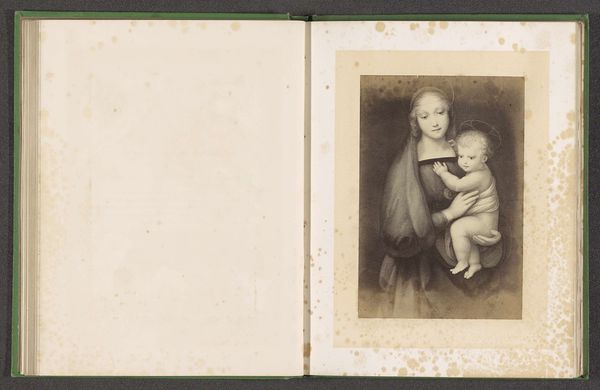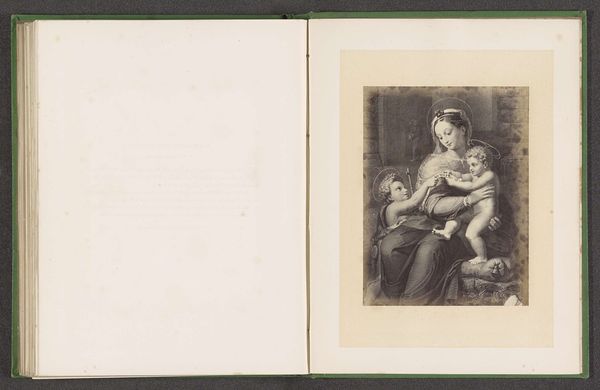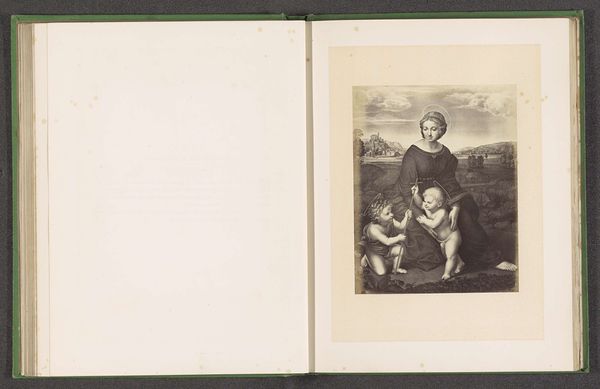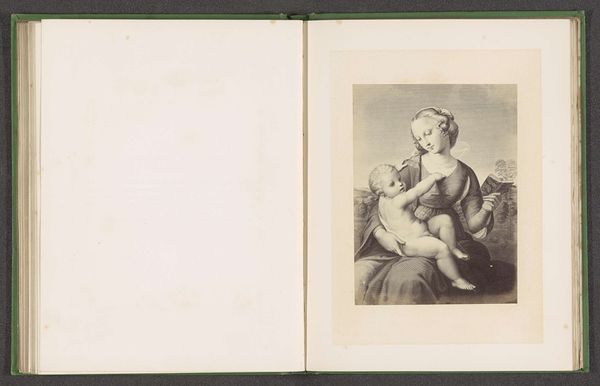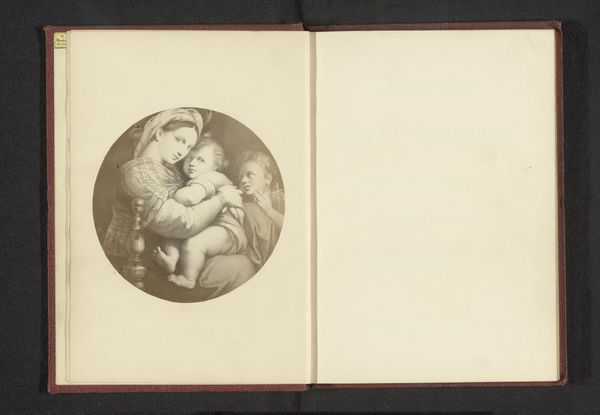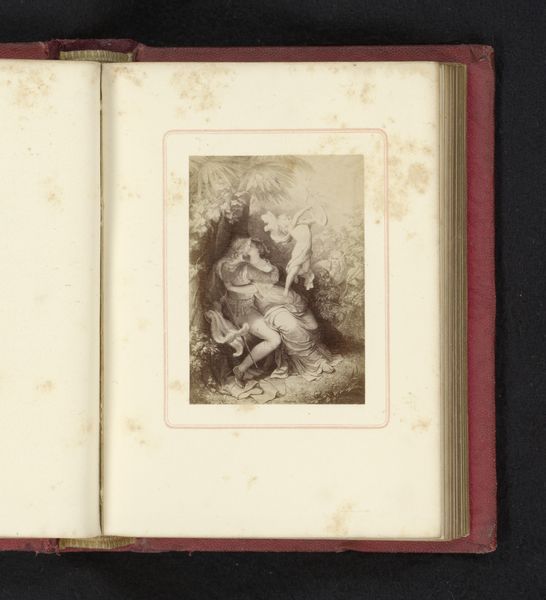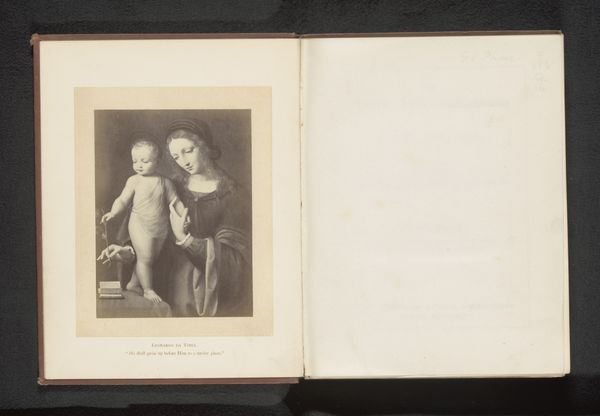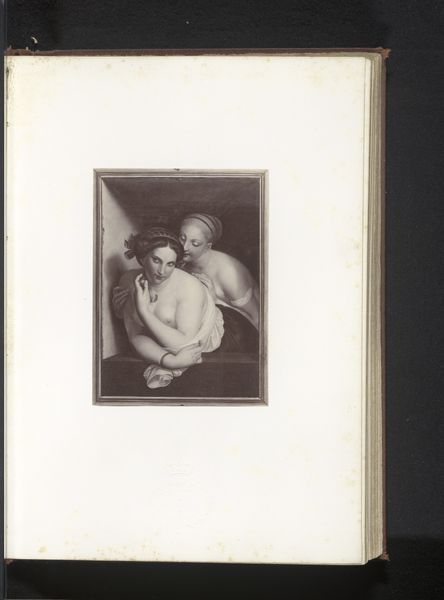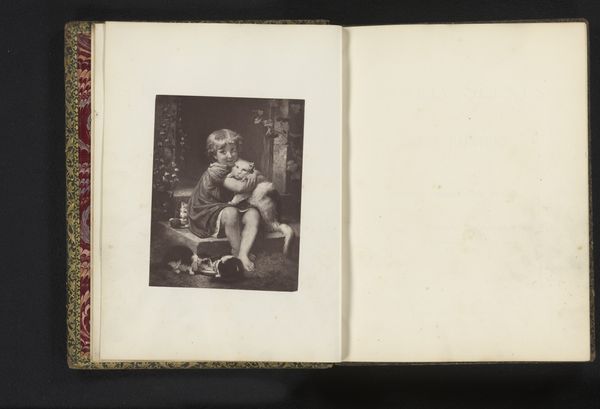
Fotoreproductie van een prent door F. Forster van de Madonna d'Orleans door Rafaël before 1869
0:00
0:00
print, photography
#
portrait
# print
#
figuration
#
11_renaissance
#
photography
#
history-painting
#
italian-renaissance
Dimensions: height 165 mm, width 128 mm
Copyright: Rijks Museum: Open Domain
Curator: This photographic reproduction captures a print by F. Forster of Raphael’s Madonna d'Orleans, dating to before 1869. The softness of the photographic rendering almost seems to add to the image. Editor: Yes, I feel an immediate sense of tenderness. The figures, bathed in gentle light, create a tranquil and intimate atmosphere. The way Madonna gazes downwards evokes something profound. Curator: Let's examine how Raphael employs a pyramidal composition to achieve stability and balance. Note the Virgin’s placement and the subtle intersection of gazes and gestures that unify the two figures. Editor: Absolutely. And that gesture—Madonna gently holding the Christ Child is not just structural but loaded with the universally resonant theme of motherhood. It evokes centuries of similar imagery, speaking to innate human connection. Curator: True, Raphael simplifies the setting—a quiet, dark space to let these two forms dominate. The simplicity almost enhances the volumes and textures rendered by Forster’s print. It’s an interesting translation of painting into a printed photograph. Editor: This representation also participates in long artistic traditions. Consider how haloes denote sanctity, or the ways that earlier religious iconography echoes even here, albeit softened by Renaissance aesthetics. It is as if layers of cultural memory are activated with a single image. Curator: I appreciate how this print presents a clear articulation of forms while employing delicate tonal gradations. It makes it incredibly accessible, almost democratic in its availability, contrasting its art historical importance and original execution. Editor: A powerful statement about art's role, isn’t it? We can analyze its formal elements, note the use of lines, structure, composition, but it always comes back to what those symbols evoke within our cultural memory. Curator: Indeed. By carefully looking, both inward at our personal interpretations and outward at the visual organization of Forster’s reproduction, we gain better understanding. Editor: This print becomes a lens through which we can observe form and feeling across time. A beautiful testament to human perception and historical art production!
Comments
No comments
Be the first to comment and join the conversation on the ultimate creative platform.
